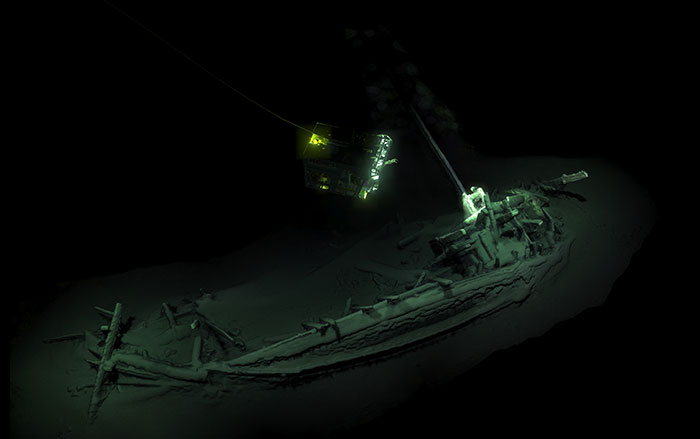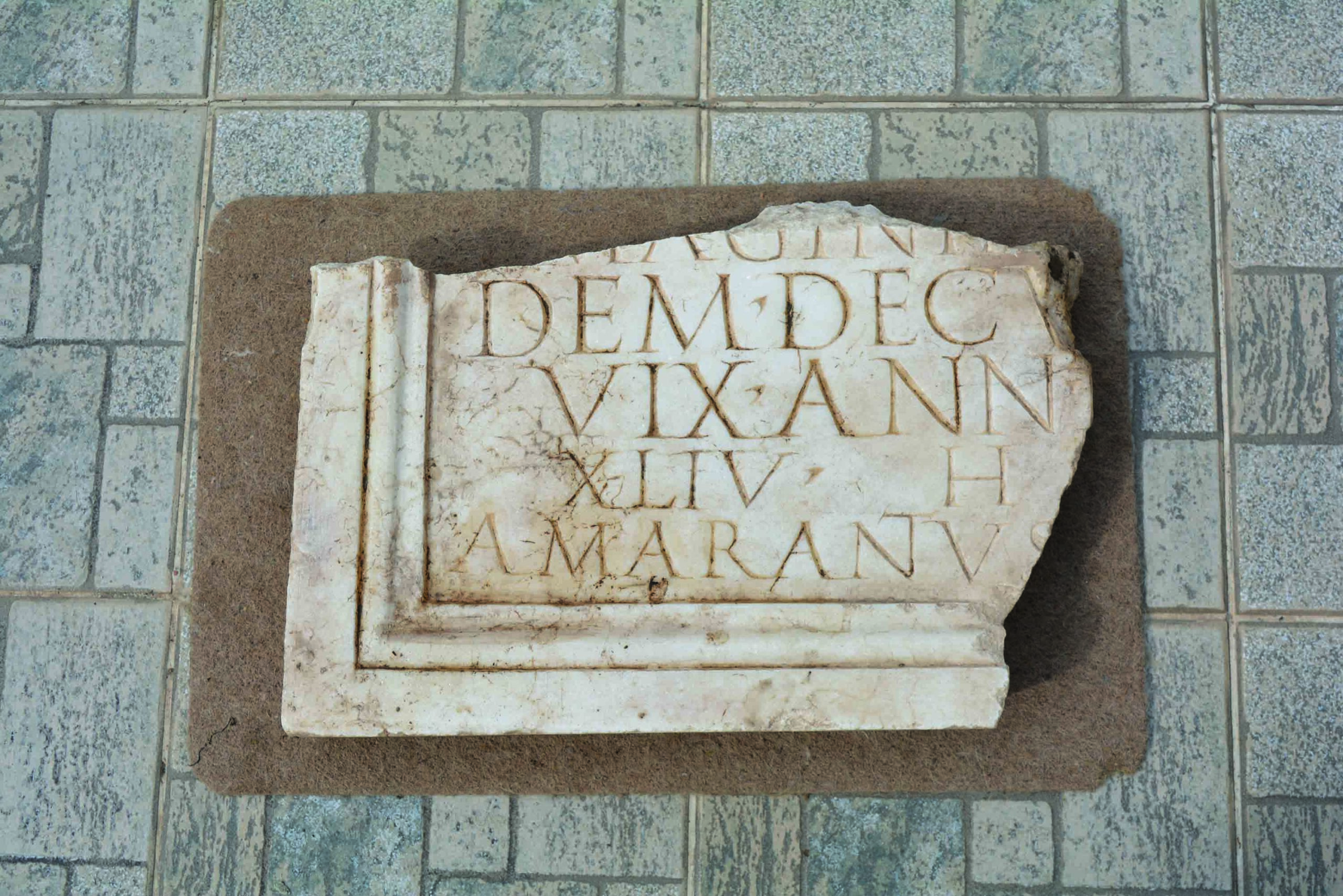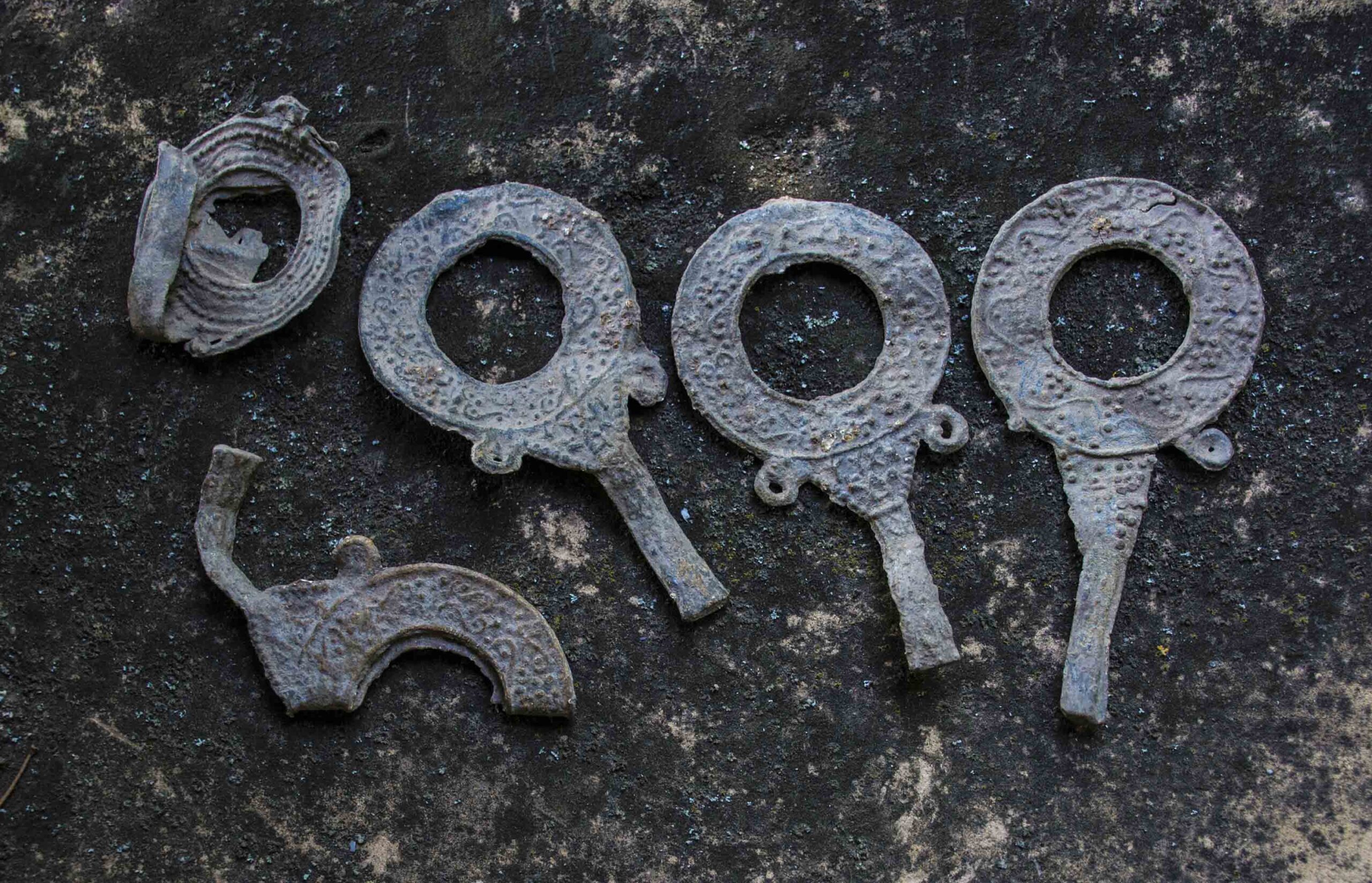SOZOPOL, BULGARIA—The Sofia Globe reports that a bronze ram’s head statuette has been recovered from a pit on St. Cyricus Island in the Black Sea, off the coast of the ancient city of Apollonia. Founded in the seventh century B.C. by Greeks from the western coast of Anatolia, Apollonia was known for its 40-foot-tall bronze statue of Apollo. A team of researchers led by Kristina Panayotova of the Bulgarian Academy of Sciences found the ram’s head statuette in a layer of the pit dated to the sixth century B.C., which also contained ceramic ritual drinking vessels and jars painted with images of wild goats. Rams were often used as sacrificial animals, Panayotova explained, and the statuette's association with ritual vessels indicates it may have been intended as a gift to the gods. To read about the gold artifacts discovered in a Thracian burial in Bulgaria, go to "Thracian Treasure Chest."
Ancient Greek Ram’s Head Statuette Found in Bulgaria
News September 10, 2019
Recommended Articles

Digs & Discoveries March/April 2021
A Dutiful Roman Soldier

Digs & Discoveries July/August 2018
Mirror, Mirror

Digs & Discoveries November/December 2017
Iconic Discovery
-
Features July/August 2019
Place of the Loyal Samurai
On the beaches and in the caves of a small Micronesian island, archaeologists have identified evocative evidence of one of WWII’s most brutal battles
 (Courtesy Neil Price)
(Courtesy Neil Price) -
Letter from England July/August 2019
Building a Road Through History
6,000 years of life on the Cambridgeshire landscape has been revealed by a massive infrastructure project
 (Highways England, courtesy of MOLA Headland Infrastructure)
(Highways England, courtesy of MOLA Headland Infrastructure) -
Artifacts July/August 2019
Bronze Age Beads
 (Courtesy Carlos Odriozola)
(Courtesy Carlos Odriozola) -
Digs & Discoveries July/August 2019
You Say What You Eat
 (Courtesy David Frayer, University of Kansas)
(Courtesy David Frayer, University of Kansas)


